Where will all the flood aid money go?
The government of Pakistan called a special press conference on Tuesday, where PM Shehbaz Sharif announced that over $9 billion were raised for flood rehabilitation efforts in a donor’s conference in Geneva.
Flood-stricken and forex-starved Pakistan has greeted the development as a positive one. However, with the finance minister admitting that most of the money is made up of multi-year project loans, it is important to know how exactly the money will come and how it will be utilized. As it turns out, while the government’s plans have outlined areas of concern and focus, very few actual projects have been named as part of the immediate relief.
Extent of damage
Through the government’s formal appeal for aid in the Geneva conference, the true extent of flood damage in Pakistan has also been revealed. The government said that 33 million people were affected by the floods in total. Out of these, 1,780 people were died while 8 million were displaced from their homes.

The government also said that over four million people faced job disruption and almost 8.4 to 9.1 million were pushed into poverty. Authorities estimated that 94 districts across Pakistan were affected enough to be classified as calamity-stricken across the four provinces. Sindh was the worst affected province, with over 70 percent of damage, followed by Balochistan, KP and Punjab.

Planning minister Ahsan Iqbal told the conference that in a cruel twist, the parts of Pakistan already most affected by poverty were hit worst by the flood.
All in all, the government estimated that the country suffered $14.9 billion in damages and $ 15.2 billion in damages due to the flood. Agriculture was the worst-hit sector ($5.6 billion in damages) followed by housing.
Aid or loan? And where will they go?
The government’s response is called the 4R Framework. The four Rs indicate Resilient Recovery, Rehabilitation and Reconstruction. By its own estimates, the government said that $16 billion were required for ‘build back better’ plan that would not only help resettle those affected by the plan while developing a plan that makes it easier to deal with future calamities as well.
Finance Minister Ishaq Dar told Wednesday’s press conference that out of the $16 billion required, the government had aimed to secure half the amount as foreign-aid. While he regarded it as a positive that the $8 billion target had been exceeded, he also admitted around 90% of the money ($8.7 billion) would come in the form of project loans. He also said that the loans will be rolled out over a 3-year period.
The government plans to roll out its recovery plan over 3 stages
Short term (one year)
This will include dealing with immediate relief for flood affectees. Although specific initiatives have not been named, government sources say that the focus will be on cash-transfers for rebuilding residences and house shelters as well as providing agricultural inputs. Where possible livelihoods will be immediately restored and psycho-social support will be provided as an essential service.
The short term plan alone is designed for $6.3 billion.
Medium term (three years)
On a medium term basis, the focus will be on re-establishing infrastructure, food and employment security to pre-flood levels. This includes rebuilding canals, fixing power plants, recovering agricultural land and providing employment training. It also includes making interim arrangements to improve health, sanitation and energy infrastructure. Essential transport infrastructure will also be repaired on a basic level.
Long term (five to seven years)
The long-term plan is geared towards building better mechanisms for prevention of disasters as well as building resilience among the communities to make sure they are better protected against a similar calamity in the future. First of all this includes cementing and improving the interim arrangements made in the mid-term plan. However, an important part of this is building up an early warning system and livelihood protection mechanism. It also includes setting up long-term finance mechanisms that can be readily mobilized in future calamities.
The mid and long-term plans are designed for approximately $8.3 billion.
Government documents list out a mechanism to ensure transparency and accountability in the disbursement of the money. The transparency mechanism is based on three levels: a policy committee, a technical committee and provincial level committees.
But the original question remains unanswered. If the government stops short of defining actual project names and explains expenditures generally while the finance minister says that the money is mostly made up of project loans, what exactly are these projects?
The government mentions particular project names only under the plan of achieving climate resilience. This mostly includes improving already existing infrastructure and speeding up already approved projects but they are listed as ‘priorities’ since the lists are pretty exhaustive. These projects are divided into two parts, while:
Irrigation and water resources
- Feasibility of Aral tail regulator on Manchar Lake along with 4 km of escape drain
- Save ecology of Manchar lake
- Completion of Nai Gaj Dam being constructed in Dadu district to reduce fl oods in Sindh province
- Construction of 53 dams in Sindh under Sindh Climate Resilient Projects
- Feasibility study and detailed design/Construction of feasible dam on Swat River in Kalam or Upstream
- De-silting of Right Bank Out all Drain (RBOD-1 and 3)
- Construction of Naulong Dam
- Feasibility on enhancing capacity of Hub Dam
- Construction of Murunj Dam on Kaha Hill Torrent in Rajanpur
- Construction of feasible dams on DG Khan Hill Torrents
- Construction of Tank Zam Dam on Tank Zam in Tank
- Construction of DarabanZam Dam on DarabanZam in D.I.Khan
- Construction of feasible dam on Swat River in Kalam or Upstream
- Construction of Burj Aziz, Babar Kach and Halak Dams for provision of water to Quetta
It also adds multiple projects such as early warning systems, in general terms.
Transport and communications
- Rehabilitation of ML-2 Kotri-Dadu-Habibkot-Jacobabad-Kot Addu;
- Rehabilitation and up gradation of ML -1 ;
- Rehabilitate and reconstruct of N-55 (Indus Highway) and N-5 as per resilient design
However, the plans once again fall to general terms when they say that ‘parameters for highways and runways’ will be reviewed and embankments and profiles of existing infrastructure will be raised.
For the latest news, follow us on Twitter @Aaj_Urdu. We are also on Facebook, Instagram and YouTube.



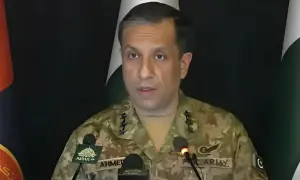

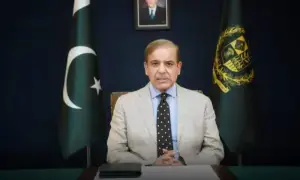

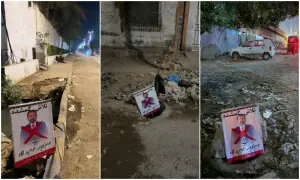
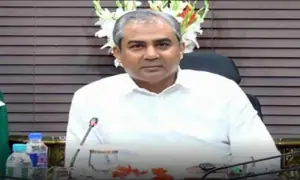






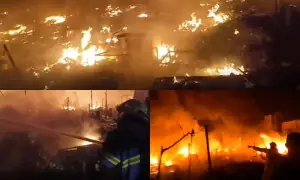


Comments are closed on this story.